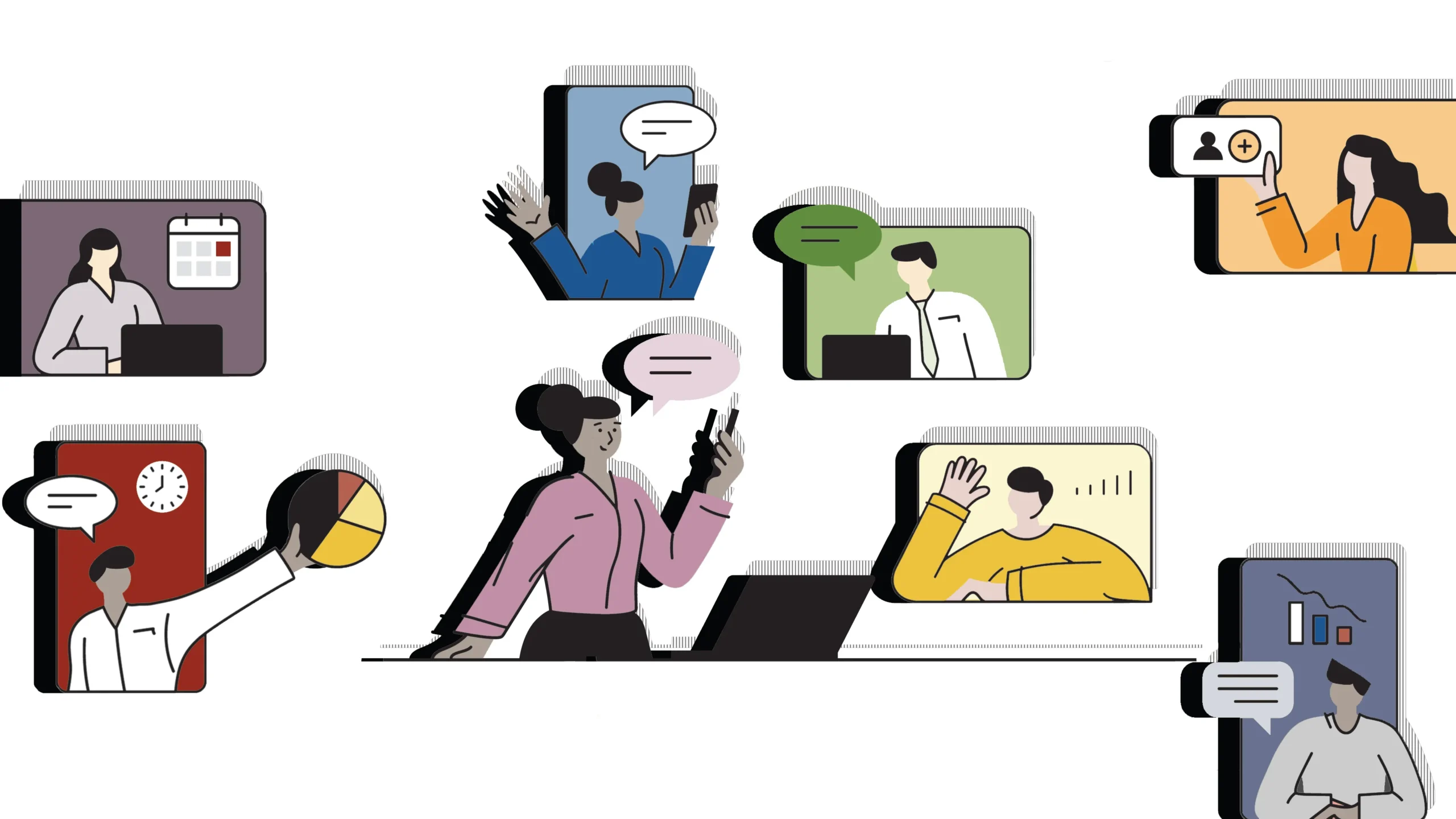The rise of remote work didn’t begin with the pandemic—but the pandemic made it permanent. What started as a crisis response in 2020 has since solidified into a foundational operating model for many technical teams across the globe. Entire companies were born remote, while others attempted to retrofit legacy cultures into something approximating “remote-friendly.”
In that scramble, many teams tried to preserve office norms instead of reimagining what work could become. Now we’re grappling with the consequences: collaboration fatigue, communication silos, declining cohesion, and an overreliance on scheduled time to simulate connection. These issues are amplified—not solved—for neurodivergent team members, who often find themselves navigating systems that default to sameness, speed, and sensory overload.
Preservation isn’t enough. It’s time to design for cohesion, not just proximity. That means building intentional structures, team rituals, and organizational behaviors that support globally distributed, neuro-inclusive teams—what I’m calling ‘Remote by Intention’. This is not about recreating the office on Zoom. It’s about architecting a model that thrives across time zones, communication styles, and cognitive wiring. One that centers flexibility, psychological safety, and purpose-driven connection by design—not as an afterthought.
Structuring Teams for Intentional Connection
Distributed teams don’t just become cohesive—they have to be designed that way. When you lose the natural gravity of proximity, you have to replace it with structure that actually supports human connection, not just coordination. And that starts with how teams are built.
I’ve seen success with small, self-organizing pods—usually around 5 to 7 people. Not just squads on paper, but groups with rotating roles that keep things dynamic and equitable. One month someone’s might be the “mission lead,” the next they’re hosting retros or running an async update thread. Make sure to include roles like facilitator-host, empathy check-in, and even an async scribe—someone who documents quietly but consistently so no one feels like they missed the moment.Switching it up regularly keeps power from concentrating in predictable places, and it gives everyone a shot at shaping how the team works together.
Depending on the distribution and size of the overall team, you can lean into a follow-the-sun model—but not the lazy kind where teams just throw code over the wall and call it handoff. Each region has a designated “handoff pair”—one person wrapping up and one spinning up. They spend 10-15 focused minutes syncing on what’s hot, what’s stuck, and what’s about to detonate. It’s not a stand-up. It’s a trust transfer. And it only works if you ritualize it enough that people feel it’s safe to hand over context and accountability without clinging to control.
These practices didn’t just come from a playbook—they came from trial, error, and listening when people said, “I don’t feel looped in,” or “I’m not sure where I fit.” You can’t fix that with better documentation alone. You fix it by designing teams that don’t just do the work, but grow into places where people actually want to stay.
Rituals That Mean Something
One of the biggest mistakes I see in remote leadership—especially in fast-moving tech teams—is treating team rituals like calendar decoration. I’ve been guilty of this in the past (and sometimes in the present). We throw a few standing meetings or icebreakers on the schedule and call it “culture.” But rituals aren’t about filling time. They’re about creating anchors—moments of pause, reflection, and human connection that hold the team together when everything else is moving fast and asynchronously.
In a globally distributed team, you can’t rely on proximity to create cohesion. You have to make space for it—on purpose. That means designing rituals that aren’t performative, but real. Ones that fit how people actually show up—not how we wish they did. That includes introverts, folks in wildly different time zones, neurodivergent teammates who prefer structure to spontaneity, and people who just don’t vibe with small talk at 9 a.m.
What follows aren’t magic bullets—they’re patterns I’ve tested, tweaked, and sometimes scrapped along the way. But when they work, they create something that metrics can’t quite capture: shared momentum, grounded in trust. Here are a few I think are worth keeping.
- Virtual “Coffee Drop‑Ins”
Adopt recurring optional Zoom rooms once or twice a week. No agenda; a placeholder for water‑cooler spontaneity (range.co). Mark them as “not required” but “freely available”—signals both structure and psychological safety.
- Opening Ritual: Check‑In Round
Start each meeting with a 1–2 minute round—“What’s got your attention?” This increases focus, empathy, and belonging, especially in silent distributed settings (fearlessculture.design).
- Weekly Socializers & Creative Power Hours
Host weekly non-work meetup slots: trivia, drawing, music-sharing, or creative power hours (range.co). Rotate facilitators, keep it optional. These rituals anchor culture and spark cross-context connection.
- Four‑Week “Empathosphere” Retrospective
Every sprint/segment/iteration/etc, hold a 30-60 minute session focused on feelings, friction, empathy-building, not just process. Research shows this builds psychological safety and team trust .
Organizational Behaviors That Stick
You can have great team structures and rituals, but if the organization around them doesn’t support those patterns—if the culture doesn’t practice what it preaches—they’ll eventually break down. And in a remote environment, the gaps show up faster. People don’t speak up. Feedback loops stall. You end up with process without trust, or flexibility without boundaries.
What makes remote work sustainable isn’t just tooling or timezone math—it’s a set of shared behaviors that reinforce psychological safety, clarity, and respect. These aren’t just “nice to have” values in a team charter. They’re operational muscles, built over time, and especially important when you’re working across neurotypes, cultures, and continents.
These are some of the patterns I’ve found that actually hold up—not just in high-trust teams, but in teams that are still becoming high-trust. They’re not complicated. But they do require consistency, clarity, and a willingness to rethink how work shows up for everyone—not just the loudest voices or fastest responder
- Psychological‑Safety Charter & Playbook
Post a team charter that includes rituals, roles, communication norms. Explicitly talk about psych safety in your kickoff meetings. Frame mistakes as learning opportunities and encourage real-time feedback (psychsafety.com).
- Communication Parity & Clarity
Commit to async-first communication: agendas, docs, summaries over voice wherever possible . Define what goes in Slack vs email vs docs. Aim to reduce surprises and meet neurodiverse processing needs.
- Ritualize Recognition
Celebrate wins in multiple formats: at retros, in Slack channels, on calls. Acknowledging neurodivergent wins—calm focus, deep pattern detection, creative problem-solving—reinforces autoregressive confidence and inclusive norms .
- Time Respect & Boundaries
Adopt “no-Slack” after hours rules or meeting‑free Fridays. Respect zones and sensory bandwidth—especially for neurodivergent teammates (lifelabslearning.com).
Leader Toolkit: How to Get Started
Many of us don’t need more frameworks or inspirational posters about culture. What we need is something we can actually do. Something that fits into the chaos of real leadership, especially when you’re running distributed teams where everything’s on fire and half your engineers are ten hours apart.
This isn’t about perfection. It’s about intentional scaffolding—the bare minimum structure you need to support meaningful connection, clarity, and psychological safety over time. The good news? You don’t need to overhaul your org to get started. These are the practical moves that have helped me and my teams build trust at scale—small, repeatable signals that tell your people: “You’re seen. You’re safe. You’re part of this.”
Start small. Iterate often. And treat every one of these as a living system, not a one-and-done checklist.
- Intentional Org Design: Map out pods, roles, and overlaps in org chart. Define expectations in engineering kickoff.
- Ritual Calendar: Publish recurring Zoom links, rituals, and rotating facilitator lists.
- Communication Charter Doc: Outline channel rules, async norms, overlap window etiquette, timezone etiquette.
- Psych Safety Workshops: Onboard new teams with a 30-minute session on safety, feedback, roles, and rituals.
- Feedback Loops: Quarterly anonymous survey—ask about emotional connection, belonging, overload. Iterate.
Closing Thoughts
Remote by Intention means designing for what matters: connection, equity, clarity, and support for all minds. It’s about engineering culture as much as infrastructure. You don’t replicate the office—you architect a global, neuro-inclusive presence.
That said, none of this is static. Building Remote by Intention isn’t a single strategy—it’s a practice. It’s something you tune, evolve, and sometimes completely rethink when it stops serving the people it’s meant to support. I’ve had moments where it felt like we were doing everything “right” on paper, and yet something still wasn’t clicking. Those moments aren’t failures—they’re signals. Invitations to get curious again.
So if some of this feels like a stretch for your team right now, that’s okay. Start where the friction is loudest. Pick one ritual, one behavior, one structure to experiment with. Talk about it with your team. Make the invisible stuff—stress, silence, confusion—visible. You don’t need buy-in from the whole org to start shaping culture. You just need a willingness to design with intention, rather than default.
And if you’re neurodivergent yourself—or leading folks who are—know this: creating space for different ways of thinking, communicating, and connecting isn’t a nice-to-have. It’s the infrastructure of belonging. And remote teams, done right, are uniquely suited to lead the way.




